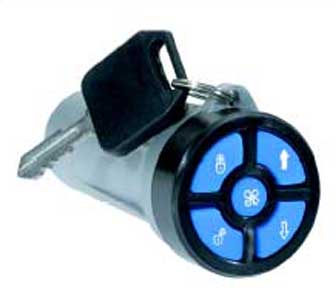
If you launch a boat as many times as I do over the course of a year, you either get pretty good at it or you waste a lot of time, experience a lot of frustration and anger a lot of your fellow anglers who are behind you at the ramp.
Thousands and thousands of launches have taught me a lot about the process, but I’m still learning, still picking up new ideas and still trying to make it easier, faster and safer.
Here are my keys to a better launch. Be aware, though, that I’m skipping some of the basics like how you back your trailer down the ramp. If you need help with that, you need to practice, practice and practice some more.
1. Gear that helps
I’ve recently found a terrific tool that saves me a lot of time, energy and aggravation at the ramp. It’s called the Key Captain and it’s made by Sarasota Quality Products. They call it a “remote launching system,” and it’s really helpful — especially if you launch alone a lot, like I usually do on the tournament trail.
The Key Captain can remotely (up to 50 feet away) lock and unlock your lockable latches, trim your outboard up and down (very handy in case you forgot to trim it up before launching or pulling out), turn your boat lights on and off and even operate your bilge pumps (but don’t forget the drain plug!). The Key Captain remote even floats! It’s saved me plenty of times, and I’ve only had one for the past year or so.
The thing I probably love most about it is the remote locking feature. I press a button as I’m coming off the water or pulling into a gas station and all the compartments are secure. When the boat’s about to go in the water, I press another button and the compartments are all unlocked. It doesn’t get much easier than that.
2. Before you get there
Whether you’re trailering a big bass boat, a small johnboat or something in between, you should take care of everything you can before you ever get to the ramp. That means your drain plug should be in (unless you’re driving through rain and the boat needs to drain), your outboard gas line should be hooked up and whatever can safely and securely travel in your boat (drinks, ice, rods and reels, tackle, etc.) is already there.
This is a time-saving measure, but it’s also a courtesy thing. If you fish on weekends or at other busy times, there’s usually a line at the ramp. Every unnecessary minute you take getting your boat in the water is a minute that not only delays you but also everyone behind you in line. It’s just plain rude not to do whatever you can before you get to the ramp.
3. Do it in line, not on the ramp
Once you’re in line, it’s time to jump out (first, put your truck in park) and take care of the last-minute things: check the drain plug again, take off your boat cover and transom saver, release the tie-down straps, get everything out of your truck that needs to go in the boat and stow it away, then get back in the truck and get ready to launch.
I can’t tell you how many hours I’ve lost over the years to rude boaters who do things only after they’ve reached the end of the line and should be busy launching … or they wait until the boat is about to hit the water and then decide it’s time to do these things. It’s frustrating, and there’s really no excuse for it.
The bottom line about making your launch experience easier is developing a system that ensures you remember every step and take care of it as soon as possible. Proper and efficient launching isn’t something that just affects you; it affects all of us. Let’s do it as well as we can.






